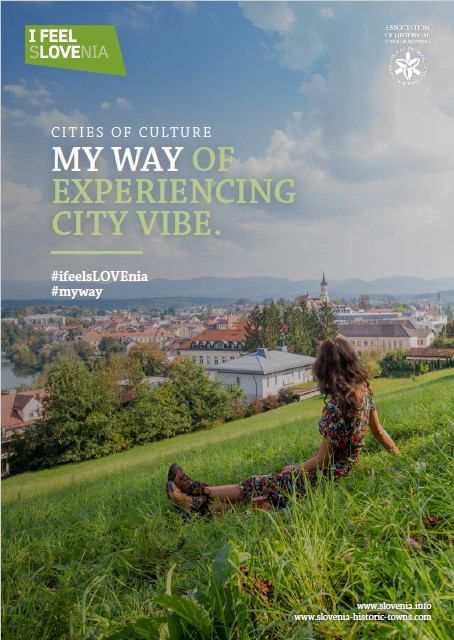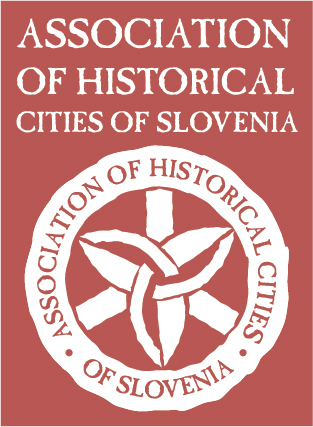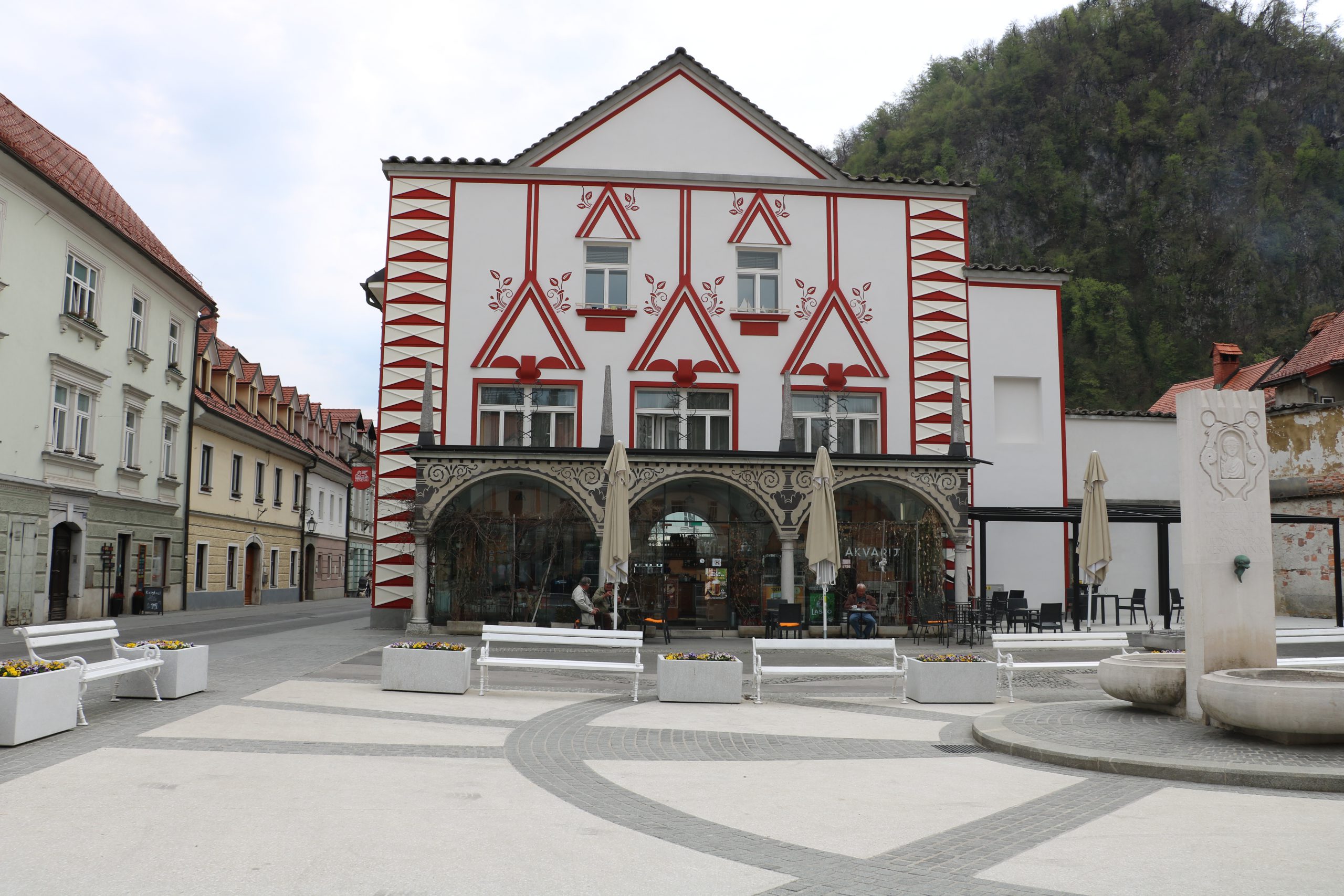
Plečnik’s Legacy in Historic Towns
150 years ago, Jože Plečnik was born, and his urban design architecture, with a focus on humanity, left a lasting impact on European capitals like Vienna, Prague and particularly Ljubljana. UNESCO has honoured his architectural legacy by inscribing his major projects in Ljubljana on the World Heritage List. His creativity is also celebrated and showcased in Slovenia’s historic towns. Discover the traces he left behind.
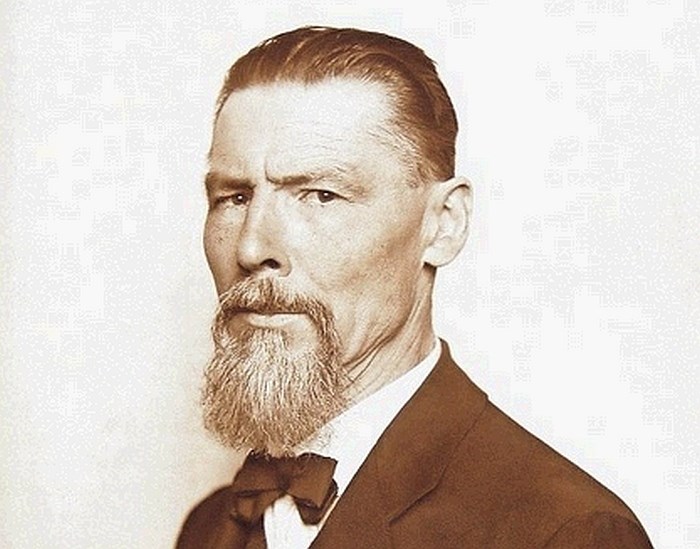
From Vienna through Rome to Prague
Jože Plečnik (1872-1957) is one of the most remarkable figures in Slovenian architecture. His distinguished work is characterized by visionary design, timeless elegance, meticulous attention to detail and an intimate understanding of materials within their environments. Born in Ljubljana, Plečnik displayed his talent for drawing from an early age. Following his time in Graz, Plečnik’s formative years in Vienna proved to be the most influential period of his studies. At the Academy of Arts, he graduated with honours under the mentorship of the esteemed Viennese architect and professor Otto Wagner. Plečnik also left a lasting mark on its Vienna’s architectural landscape. Despite being nominated three times as Wagner’s successor, the ministry, under strong pressure from the German circles rejected the nomination because of Slovenian roots.
While in Vienna, Plečnik also embarked on a transformative journey to Rome, where he was captivated by the city’s ancient art and classical simplicity. This profound experience left an indelible mark on his works in Slovenia.
Prague marked another important chapter in Plečnik’s career. Appointed as a professor at the Prague School of Arts and Crafts in 1911, he immersed himself in teaching. The first President of Czechoslovakia, Tomáš G. Masaryk, personally entrusted him with the redesign of Prague Castle and its surroundings as the seat of the President of the Republic. This was not only an architectural marvel but also an opportunity for Plečnik to foster unity among the Central European nations, whose brotherhood he deeply believed in. In 1920, he accepted a professorship at the Faculty of Engineering in Ljubljana and remained in his hometown until his death.
Plečnik’s Ljubljana
The so-called Plečnik’s Ljubljana period stands out as one of the most prolific phases of his career, when he poured all his energy into shaping and designing the city. Following the collapse of the Austro-Hungarian Empire, he successfully elevated Ljubljana, envisioning it as the Athens of Slovenia, to a prominent position on the global stage of the most significant artworks of the 20th century. Further evidence for this lies in the inscription of his major Ljubljana creations on the esteemed UNESCO World Heritage List. This includes the bridges over the Ljubljanica river between Trnovski pristan and the locks, the Ljubljanica embankments, Trnovo Bridge, Vega street, Križanke open-air venue, Ilirija pillar, the National and University Library, Congress Square and Zvezda park, as well as Mirje with its Roman walls, Žale cementary and the churches of St. Francis and St. Michael.
Plečnik’s Legacy in Slovenia’s Historic Towns
With his remarkable artistic endeavours, particularly in urban planning, which were bold, diverse and of exceptional quality, Plečnik elevated the Slovenian landscape out of anonymity. His creativity extended beyond the capital; he was active in other regions of the country as well, particularly in Gorenjska. Explore his profound influence on the architecture of Slovenia’s historic towns
Sacred architecture
Keen observers will notice traces of the master’s genius scattered across Jesenice and Tržič: from the intricately designed church doors of St. Leonard’s Church, portraying the evangelists and apostles, to the meticulously crafted tabernacle door and baptismal stone cover of St. Catherine’s of Alexandria Church in the village of Lom pod Storžičem. In Škofja Loka, Plečnik’s talent graces the Church of St. James. He designed the baptistery, the image of The Crucified and even the elegant chandeliers. In Radovljica, the castle chapel in the Katzenstein mansion has regrettably not been preserved, but his enduring legacy shines through in the architectural composition of the square in front of the Basilica of Mary Help of Christians in Brezje, which he divided into three distinct units.
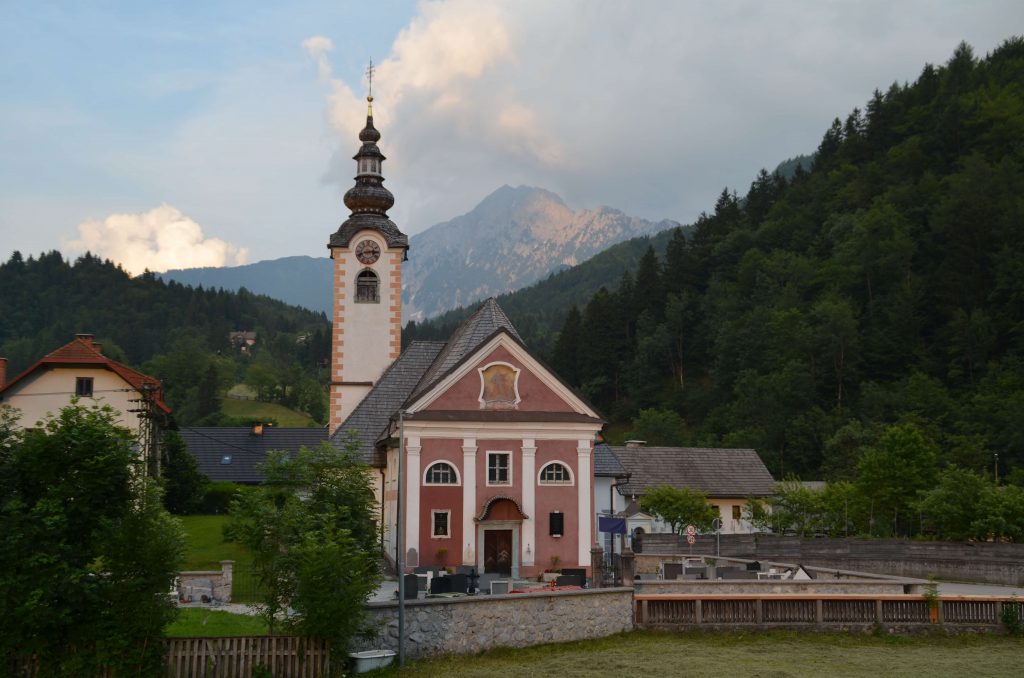
St. Catherine’s Church, Lom pod Storžičem, Tržič
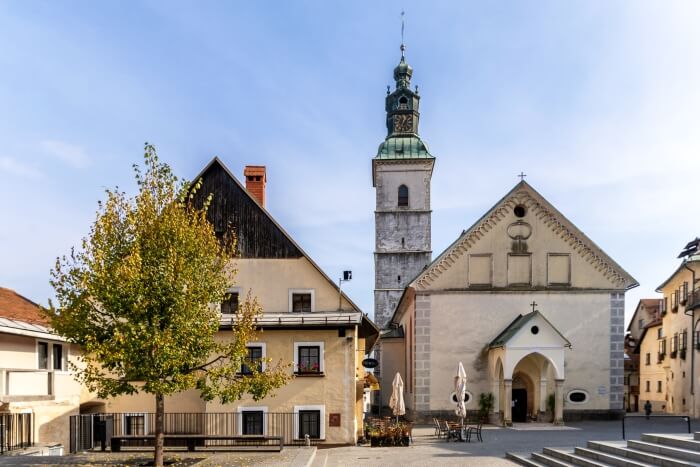
St. Jacob’s Church, Škofja Loka
Plečnik reverence for sacred architecture was profound, as he believed it possessed the power to transcend time and foster a deeper connection with the divine.
In the autumn of his life, Plečnik often visited Kamnik, a town where his presence is visible through numerous works, including numerous in sacred buildings. He gave a contemporary touch to the baptistery of the Church of the Immaculate Conception of the Blessed Virgin Mary in the picturesque Šutna Street, and crafted a pedestal adorned with clusters and leaves, crowned by an angel’s head behind Layer’s painting of the Mother of God from Brezje. He also made the concept for the Chapel of the Holy Sepulchre in St. James Church in Kamnik, after he redesigned the baptistery in the parish church of St. George in Nevlje. Noteworthy is the arch adorning the entrance of the Chapel of the Holy Sepulchre, veiled in delicate metal mesh, from which a bird, symbolizing the Holy Spirit, ascends into the sky.
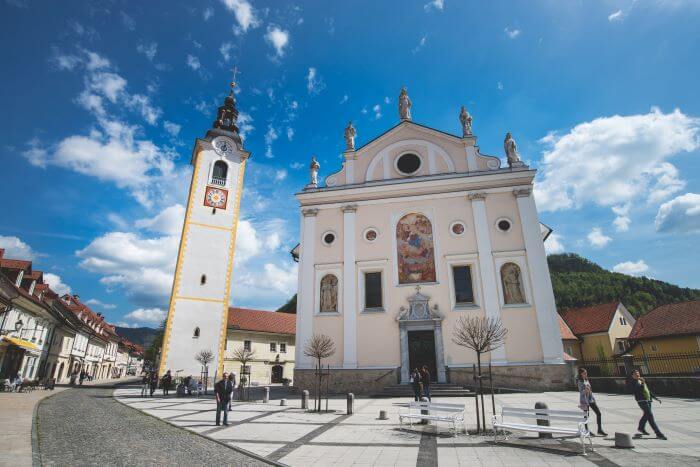
Parish Church of Marys Immaculate Conception, Kamnik
While Plečnik primarily designed grand buildings, his innovative spirit extended to the design of intricate, especially liturgical objects. In the Metlika parish, you can marvel at a chalice desgined by Plečnik. It is distinguished by its adornment with Old Austrian silver coins, a rare and unconventional choice for such a sacred vessel. His chalices can also be found in Kamnik and Radovljica and he also crafted a ciborium for the Church of St. James in Kostanjevica na Krki.

Kelih designed by Plečnik, Metlika
Unique Architecture and Urban Solutions
The most iconic building in Celje is Ljudska posojilnica (People’s Loan Society), a significant architectural gem from the interwar period. Its striking façade, adorned with columned balconies in three floors, can not be overlooked. Originally, this was a graduation project by Plečnik’s student, Vinko Lenarčič, but today this landmark known as “Plečnik’s Corner” is slowly reclaiming its former vibrancy.
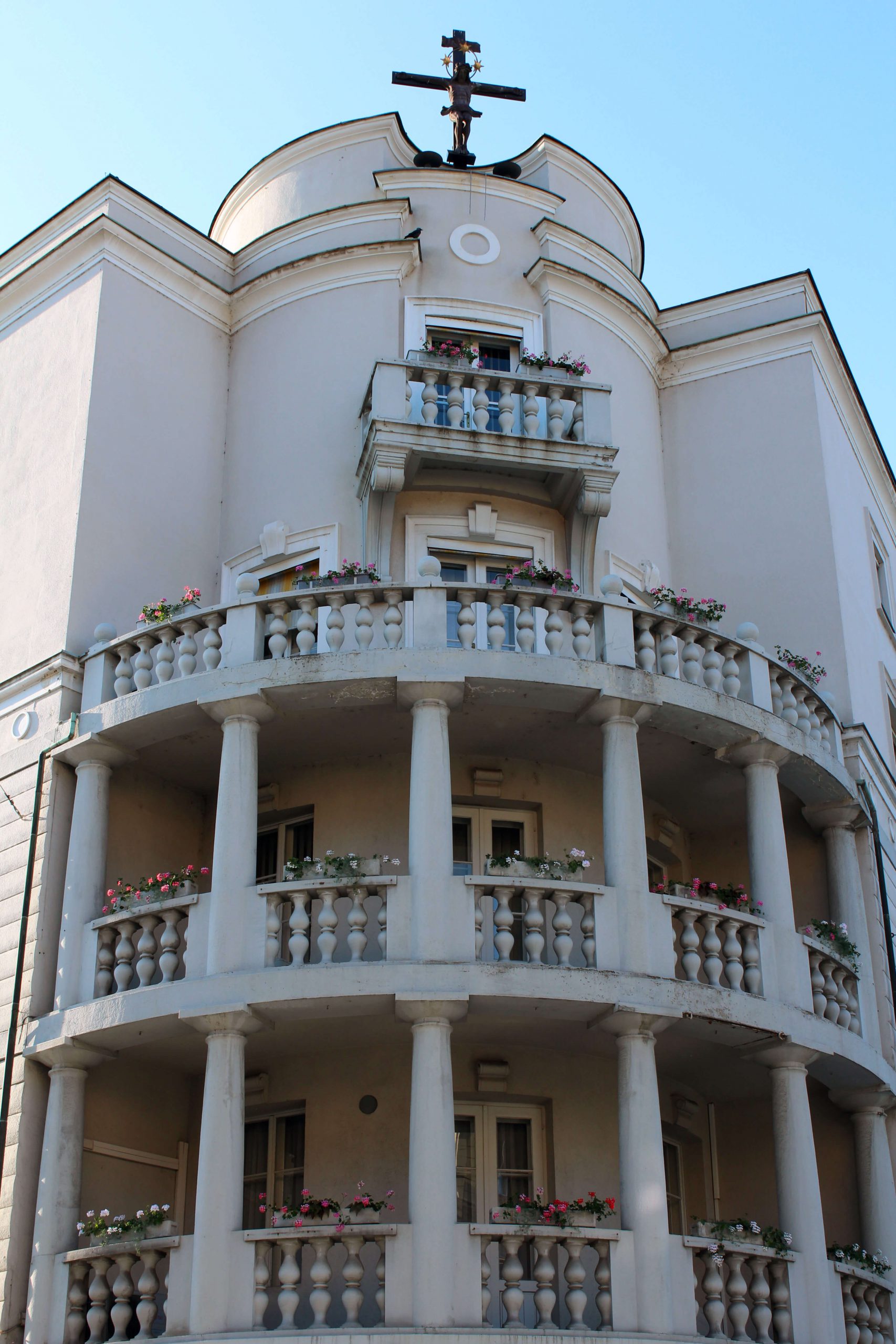
People’s Loan Society, Celje
Plečnik’s influence extends beyond Celje, as he also contributed several urban planning solutions to the towns of Kamnik, Metlika and Kostanjevica na Krki.
A stroll through Kamnik’s Main Square will delight you with its captivating facades and a fountain, thoughtfully crafted by Plečnik’s assistant, Anton Bitenc. The town’s central layout was initially envisioned by Plečnik before WWI. Do not miss Lectar’s House – The Stele Candle Shop, located between the Main Square and the Franciscan Friary. Here, Plečnik’s exquisite candle decorating designs are preserved, alongside rustic furnishings he crafted. A visit to the Lectar’s House is part of a guided tour of Plečnik’s legacy in Kamnik, where you will also witness his distinctive style reflected in the architecture of the town’s railway station, a project spearheaded by Plečnik’s pupil, Vinko Glanz, and Plečnik’s iconic concrete bridge across the Nevljica River.
Head to Kamniška Bistrica Valley to discover King Alexander’s Hunting Lodge. Despite its tragic history—King Alexander I Karadjordjevic tragically passed away shortly after its completion—the lodge stands as a tribute to Plečnik’s vision. Following a complete renovation, visitors will have the opportunity to admire the original furnishings intended for the royal couple, offering a glimpse into a bygone era of royal elegance.
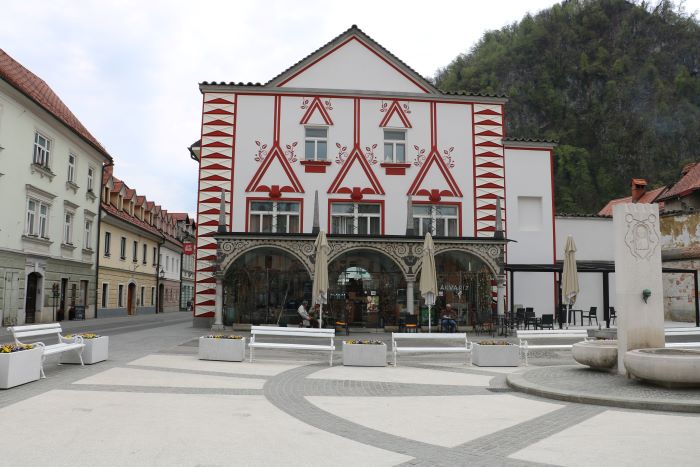
Façade on the Main Square, Kamnik
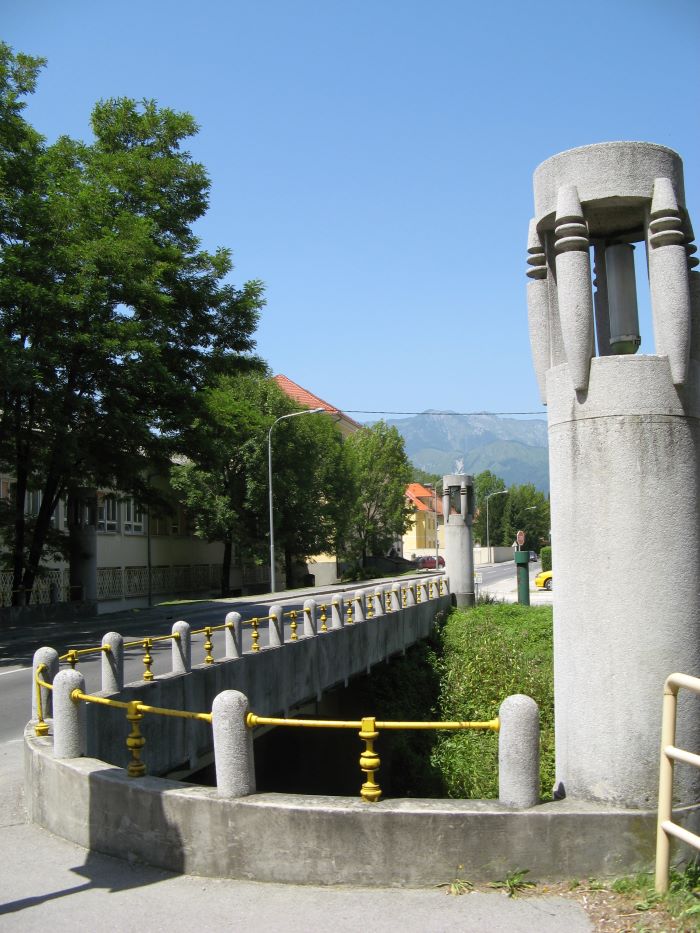
Bridge over the River Njivica, Kamnik
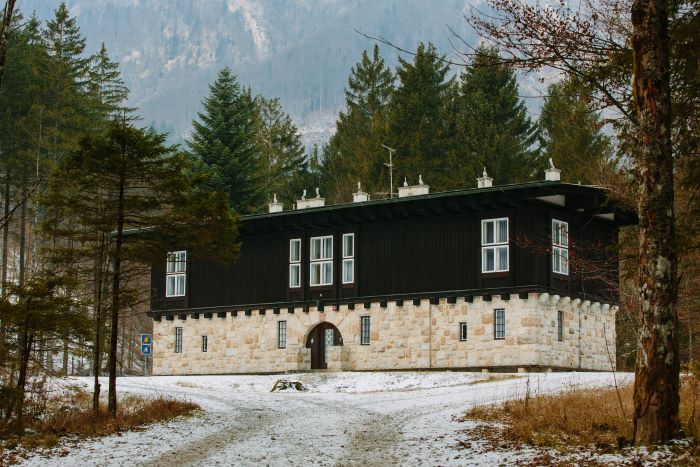
King Alexander’s Hunting Lodge, Kamniška Bistrica
Despite receiving significant public recognition, Plečnik faced harsh criticism from his contemporaries, who found his style lacking the modernity and struggled to categorize his work within any specific artistic style. It was only decades after his passing that the true magnitude of his oeuvre began to be appreciated, particularly thanks to the insights of foreign critics.
In 1937, Plečnik played a pivotal role in the restoration of the birthplace of the Ipavec composers in Šentjur. He presented several innovative solutions for both the interior and exterior of the house, with the most notable addition being the fountain in the garden. Here, visitors can immerse themselves in the harmonious fusion of musical and architectural heritage.
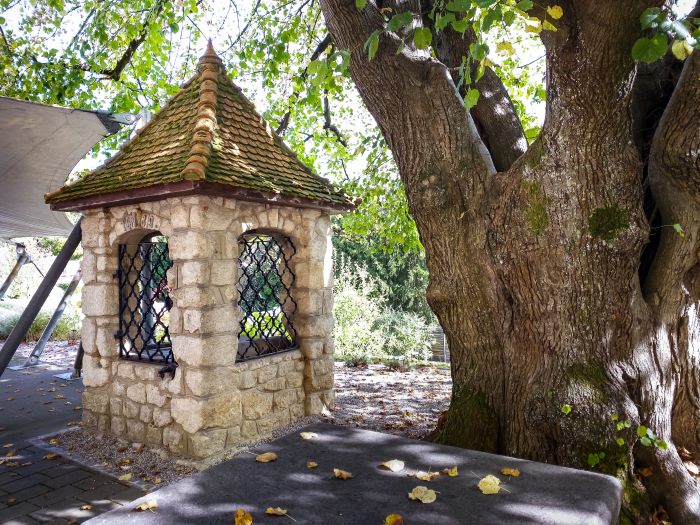
Fountain in the garden of the Ipavec composers’ birthplace, Šentjur
Beyond Šentjur, Plečnik’s visionary touch extended to Metlika, where he drafted architectural plans for four prominent public buildings. These included the town chieftaincy, the folk and vocational school and the Metlika cemetery. For this project, he worked closely with his first graduate and esteemed colleague, Gizela Šuklje—a native of Metlika.

Town plans, Metlika
Despite his friendships with several women, Plečnik never pursued romantic relationship with any of them. However, one friendship stood out—with Emilija Fon, a highly educated Master of Pharmacy who operated a private pharmacy in Kostanjevica na Krki. Over nearly 25 years, their platonic relationship flourished, documented through more than 300 heartfelt letters. Their remarkable story also became the focal point of a beautiful documentary film in Slovenian released a few years ago. Despite their deep connection, Plečnik maintained his reluctance to deepen their friendship further. But it was at her initiative that Plečnik designed plans for various projects in Kostanjevica na Krki, including the interior design and logo of her pharmacy. He also ambitiously envisioned the revitalization of the island’s transverse axis, despite never setting foot on its shores. The legacy of his vision is the wooden Tercijalski Most Bridge, affectionately known as the Bridge of Love.
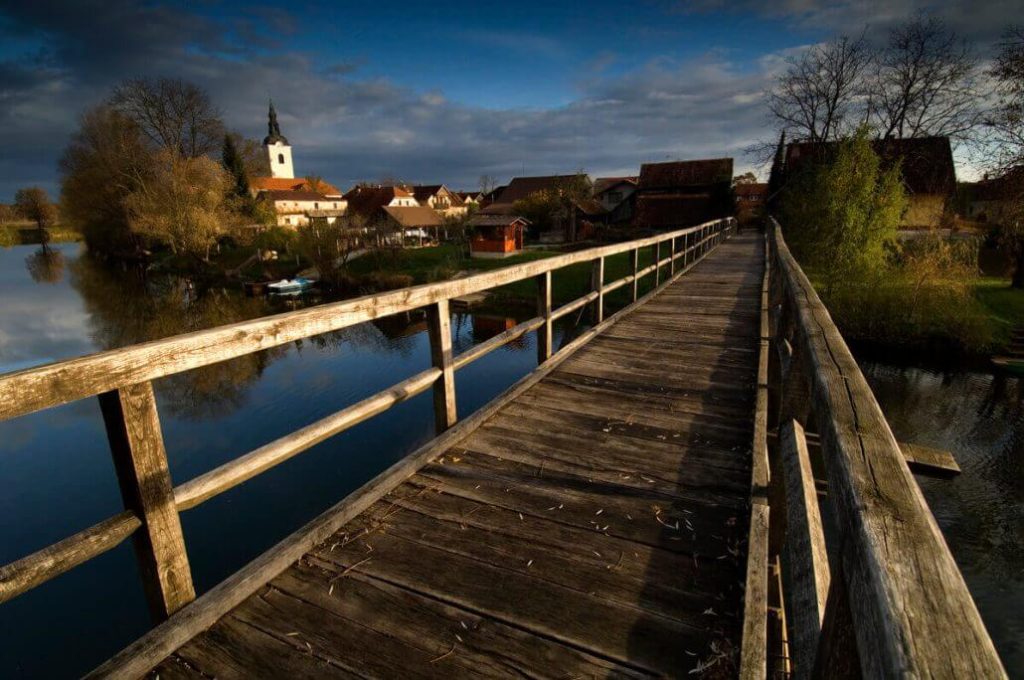
Tertiary Bridge, Kostanjevica na Krki
Plečnik’s insatiable curiosity and avid reading are well documented. His correspondence with Emilia reveals he was also as an exceptional literary artist.
Probably the most renowned building in Kranj bearing Plečnik’s signature is the Prešeren Theatre. Here, the masterful addition of arcades and uniquely designed lighting fixtures showcases Plečnik’s distinctive touch. Similarly, at the St. Mary of the Rosary Church, Plečnik envisioned a grand entrance to the city, complete with a fountain and arcaded staircase. Another notable structure in Kranj is the Bežek Villa, crafted by Plečnik for Dr. Bežek. However, this historic gem is now in need of restoration.
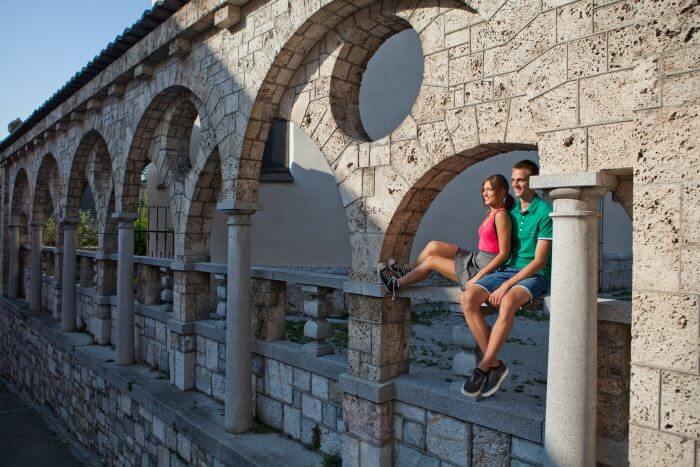
Staircase, Kranj
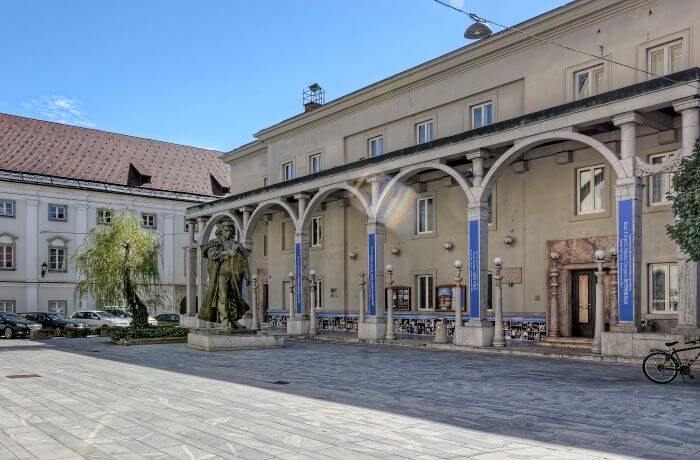
Prešeren Theatre, Kranj
Plečnik’s architectural legacy reminds us how crucial it is to protect historic buildings, urging us to prioritize their preservation in the future.
From the Katzenstein Manor in Begunje, just a stone’s throw from Radovljica, a walking path will guide you through the avenue, to the tranquil settings of Brezjanka or Murka, and the viewing pavilion adorned with the chapel of St. Joseph, affectionately known as Jožamurka. Both structures were envisioned by Plečnik at the request of the Sisters of Mercy. Additionally, The National Shrine Mary Help of Christians at Brezje houses the Nativity Museum, where Plečnik’s captivating stylized wooden nativity scenes await your exploration.
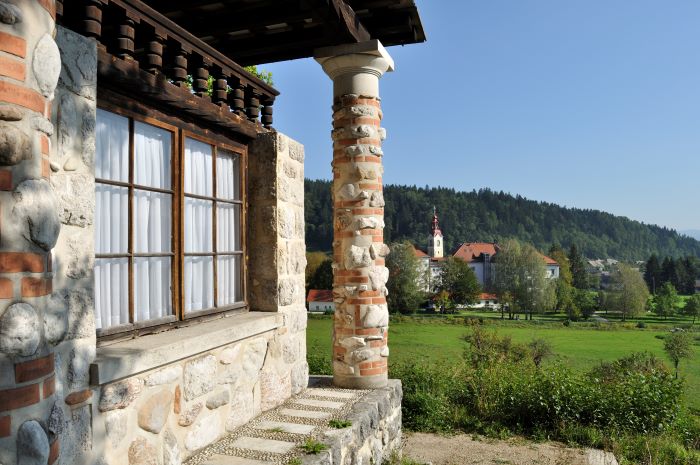
Viewing pavilion with the Chapel of St Joseph, Begunje na Gorenjskem
Monuments and gravestones
Plečnik was frequently asked to design family tombstones, a task he gladly embraced. His distinctive touch graces family memorials across the Kamnik cemetery and in nearby Mekinje, as well as in Kostanjevica na Krki, home to the Fon family grave and the resting place of Emilija Fon.
Post-war, he dedicated himself to the creation of over 20 memorials for the National Liberation Struggle (NOB), including those on Seidl Road and in Bučna vas in Novo mesto. Additionally, he drafted plans for a mausoleum in Ptuj, which was never built.
Fascinating Facts about Master Plečnik:
- He garnered early acclaim in Vienna for crafting furniture for wealthy citizens.
- Due to his fears about surviving World War II, Plečnik had his tombstone made as early as 1941.”
- He was one of the first members of the Slovenian Academy of Sciences and Arts.
- Plečnik’s accolades include the prestigious Prešeren Prize, multiple honorary doctorates, and the esteemed titles of honorary citizen of Ljubljana and honorary member of the Royal Society of British Architects.
- Among his unconventional proposals was the idea to demolish Ljubljana Castle and build a parliament there instead.
- He always wore dark clothing.
- Describing himself as possessing a “wild nature,” Plečnik exhibited a paradoxical temperament—capable of both fiery outbursts and serene kindness, a duality reflected in his architectural creations.
- He never asked for payment for his projects outside the professorship, so grateful clients regularly brought him gifts, such as cviček and brandy.
Eager to uncover the most enchanting stories of our towns? Select from our top experiences and delve into Slovenia’s historical towns in a whole new light.


